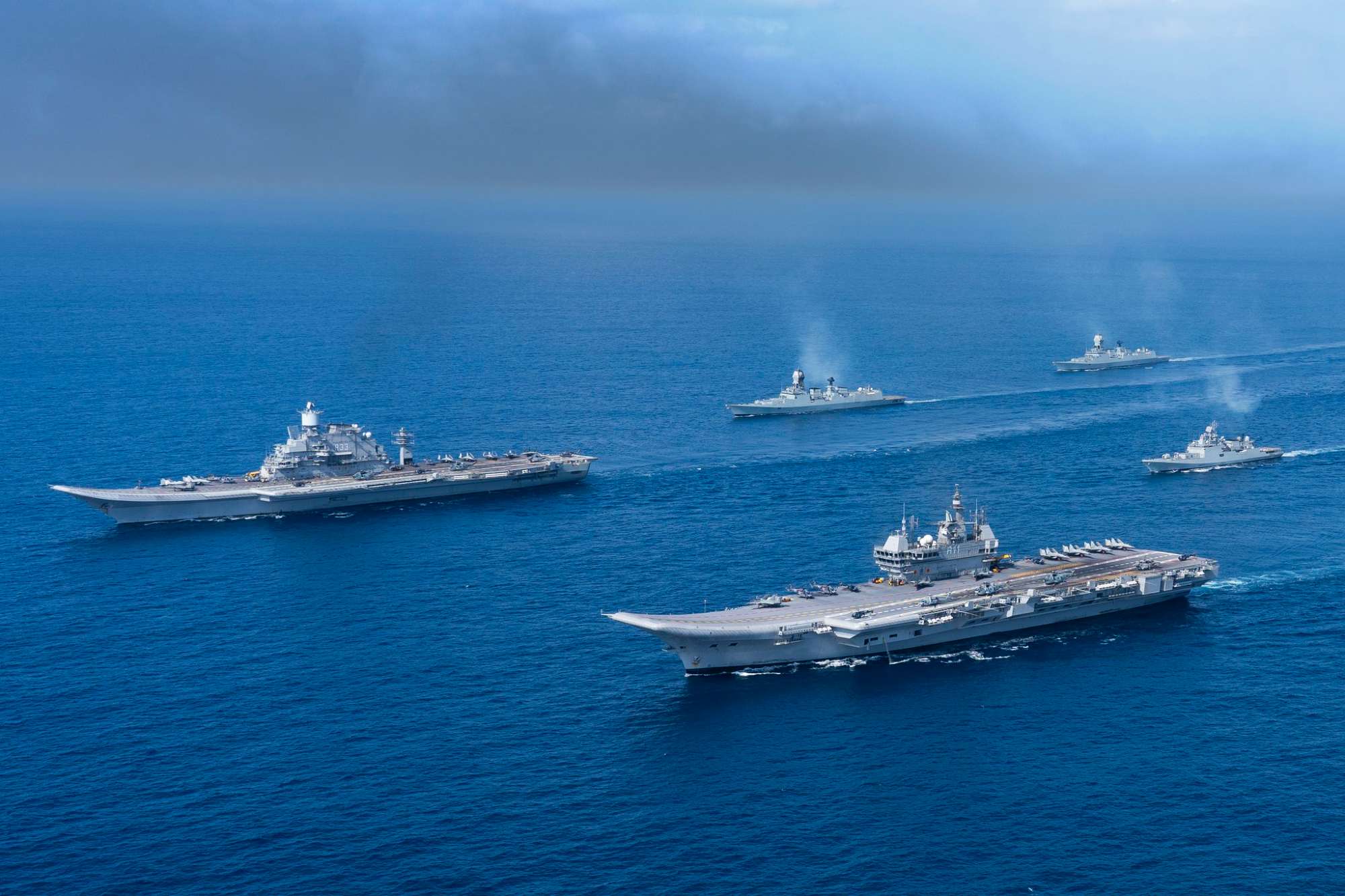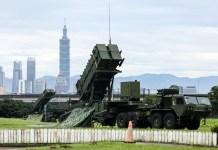OPED By Gp Cpt TP Srivastava
“Traditionally, naval ships have been painted a shade of dark gray. If the Gorshkov is purchased, the Indian Navy might make an exception and paint the ship white. The aircraft carrier is bound to be the biggest white elephant in the navy’s fleet,” former Indian Navy chief Admiral JG Nadkarni had said.
“You have recently completed your bungalow and are looking to hire some people for security. Local staff has agreed to do the job with his friend for about Rs 2,000 a month per person.
“But your good friend who has a security business steps in. Don’t waste your money, he says. I have a surplus of these people. I can give you a couple for free. But what about some electronic fencing and surveillance cameras? Before you know it, he has sold you equipment worth a couple of lakhs. India’s imminent purchase of the Russian aircraft carrier Admiral Gorshkov comes close to this illogical purchase.”
Background
Despite the candid opinion of a former navy chief, the Indian military purchased the ‘white elephant’ at a considerable cost. Another illogical acquisition from the same country, the S-400 platform, has been made recently at a whopping cost of INR 39,000 crore.
If the amount spent on these platforms were instead spent on the purchase of Submarines, the Indian Military’s offensive capability to control affairs in the Indian Ocean Region (IOR) would have been a few notches higher. We are about to repeat the same/similar mistake by deciding to invest in a platform that will never be used as an operational platform.
We continue to ape China and the Western world. Before elaborating on the ‘usefulness/uselessness’ of an Aircraft Carrier, it would be more appropriate to mention Chinese Aircraft Carrier and Indian Aircraft Carrier operations during the war.
There are four basic requirements for a CBG (Carrier Battle Group) to be used in a genuinely offensive role (in addition to compliments of support ships and submarines), which I call QUAD (I coined this term in 1981);
- Dedicated Carrier Borne AEW/AWACS.
- Dedicated Air-to-Air Refuelling Capability.
- On board Strike aircraft with sufficient Radius of Action and weapon load.
- Airborne Surveillance Aircraft for Submarine Detection.
Chinese CBGs do not have any of the above. Hence, to project Chinese CBGs as a threat in the Indian Ocean region (IOR) is akin to daydreaming. From the east coast of China (say Shanghai), the distance to the Bay of Bengal (Andamans, for example) will be around 3800 km.
China lacks the logistic capability to support a CBG at such a distance. After entering the Straits of Malacca, CBG will be vulnerable to Su-30s and P8i in addition to our own CBG if it succeeds. Will China take that risk? Extremely unlikely!
China Centricity
Military strategists in India are busy talking about Chinese Aircraft Carriers. The third platform Fujian fitted with EMALS is doing limited sea trials. Can the Chinese Navy bring its Carrier Battle Group to the Bay of Bengal or the Arabian Sea, and from where?
Only four routes are open for the Chinese Navy to enter the Bay of Bengal/Arabian Sea. The closest and fastest approach will be through the Straits of Malacca. Sunda, Lombok, and Torres Strait are also theoretical possibilities. Chinese CBGs, as of date, are incapable of threatening Indian interests in IOR in the foreseeable future.
American CBGs are the only genuine offensive sea control entities in the world. Chinese Navy is unlikely to acquire matching capability even in the next 30-40 years. Chinese CBGs can only operate around the South China Sea and in the neighborhood.
Even against Taiwan, Chinese CBGs will not be able to operate offensively because Taiwanese air power has modern land-based strike elements, which will pose a grave threat to Chinese carriers. Hence, acquiring yet another aircraft carrier on the pretext of challenging/meeting the Chinese CBG threat is an irrational conclusion based on presumptuous imagination.
Indian Aircraft Carrier Operations During War
The Indian aircraft carrier INS Vikrant was used in the eastern theatre during the 1971 war. Indian Military could deploy and use INS Vikrant because there were no Air Power elements in erstwhile East Pakistan courtesy of the ‘superior’ wisdom of Yahya Khan, who ordered the withdrawal of PAF elements from East Pakistan.
Hence, Sea Hawks from INS Vikrant could operate with impunity. Such a 100% sterile environment will never exist in the foreseeable future against Pakistan in the Arabian Sea. Due to the reasons Chinese CBGs cannot operate in IOR, Indian CBGs cannot work anywhere near the South China Sea.
Status Of Present Indian CBGs
Indian Military currently has two ‘operational’ aircraft carriers. Hence, we could create two independent CBGs. However, Indian CBGs lack the first three elements of the QUAD discussed above. The only world-class platform available is P8i, the fourth element of QUAD. The capability of each one of these will now be placed for the perusal of ‘informed’ decision-makers.
- Carrier Borne Aircraft. The current aircraft, MiG-29K, has a minimal radius of action in the strike role with maximum weapon load (280 km). In the air defense role, it has an endurance of 90 minutes while deployed 200 km from the carrier. Hence, the Carrier must be less than 200 km from Karachi to enable MiG 29K to strike a target barely 80 km from the coast. Can it happen? Never!
PAF F-16s have a LO-LO-LO radius of action of around 550 km with two AIM9L or One Exocet, which implies a ‘ONE WAY’ reach of 1100 km. Exocet has a launch range of about 150 km. Hence, an F-16 can engage a ship while the ship is about 12-1300km from the Pak coast (Karachi).
If Indian CBG approaches within 12-1300 km of the west coast of Pakistan, PAF will launch a ONE WAY super saturated single radial strike with 16 F-16s. Eight F-16s will have AIM9L Air-to-Air missiles (range 120 km) and ECM Pods. The remaining eight F16s will carry one EXOCET ANTI SHIPPING MISSILE.
Assuming that the first fourteen F-16s will be shot down, the remaining two will launch their EXOCET targeting the carrier. Two Exocet hits will sink the aircraft carrier without any doubt. While PAF will lose sixteen F-16s and pilots, the Indian Military will have lost two squadrons worth of aircraft (32), nearly 1500 men, and a capital ship.
It is being stated so candidly to let the decision makers know the actual operational capability/utilization of a CBG. What will be the functional efficacy of Indian CBG operating farther than 1300 km from the Pak coast?
Without a doubt, after Rafales are inducted, strike and AD capability will be enhanced by a few notches, but even that would not enable CBG to operate near Pak’s west coast. The above scenario was wargamed at the College of Airwarfare when I was Chief Instructor.
- Dedicated Carrier Borne AEW/AWACS. Currently, CBGs neither have any fixed-wing carrier-borne AEW/AWACS having sufficient endurance, nor is it likely to happen in the next 30-40 years. Without dedicated AEW/AWACS, a CBG will be a ‘sitting duck’ against an adversary with formidable air power elements.
- Dedicated Air-to-Air Refuelling Capability. Currently, the capability does not exist.
- Dedicated Surveillance Aircraft. P8i is the most modern surveillance platform available in sufficient numbers to provide round-the-clock surveillance to CBG.
- Day/Night Operations. Today, Indian carrier operations can be carried out by day only. Even in 1971, carrier-borne aircraft operated during the day only.
Sea Control vs Sea Denial
The debate on sea control and denial is as old as the Navy. Effective sea control can only be carried out by a ‘fully equipped’ CBG. If any element is not available, CBG becomes vulnerable. Having proved beyond reasonable doubt that Chinese CBG cannot enter IOR and operate against Indian interests, the next issue is sea denial.
The Chinese submarine fleet is vast (nearly 70) compared to India’s (18). Indian submarine fleet is primitive. No single Air Independent Propulsion (AIP) capable conventional submarine has yet joined the fleet. Hence, our sea denial capability is minimal and needs to be enhanced on priority.
Sea Control: An Outdated Concept
Nearly four years ago, when hypersonic anti-shipping missiles were not in the picture, I had proposed that the Indian Military needs three CBGs, hence four carriers: one for refit and three deployed operationally. In 2023, hypersonic anti-shipping missiles have become a reality. China is the leader.
However, the claimed hypersonic anti-shipping missile capability has yet to be proven in actual conditions. No known ballistic missile defense system can intercept the incoming hypersonic missile. With the use of Artificial Intelligence, it will invariably lock on to the largest ship, The Aircraft Carrier.
In 2023, there is no point discussing the battle of the Coral Sea or the battle of Midway to promote the case for acquiring aircraft carriers. For that matter, even Falkland’s operations of 1982 are merely for records.
Surface ships have become far more vulnerable now than a decade ago. Classic CBG operations are no longer feasible against an adversary with formidable air power.

Conclusion
To genuinely control affairs in IOR, the Indian Military needs to upgrade its submarine fleet, both in quantity and quality. Enhanced Sea Denial capability will ensure that China does not attempt any misadventure.
Acquiring more aircraft carriers will be counterproductive because the platform will not have substantive operational use. The proposed investment in a third aircraft carrier must be diverted to acquiring submarines on priority.
The Chinese Navy’s submarine capability is miles ahead of the Indian Military. The gap cannot be bridged overnight, but firm and concrete steps, if taken, will enable the Indian Navy to guard IOR in a far more effective manner.
Aircraft Carriers are weapons of the past. What is the target envisaged for carrier-borne aircraft, and where? Our CBGs can operate only against Pakistan. PAF is and will remain a force to reckon with, and Indian carriers operating in the Arabian Sea will be their prime target.
Let us get existing Aircraft Carriers equipped with weapons and weapon platforms that will ensure safe operation. Neither of the existing carriers in the Indian Navy fleet, with a mere 45,000-ton displacement, is a proper strike carrier. Fujian of China is 80,000-ton ship.
Indian Military must not fall into the ‘carrier race.’ We must learn from the mistakes of the USSR, which entered the anti-ballistic missile race with the USA after the USA’s STAR WARS program was declared operational (which never happened) and disintegrated. Technology was used as an economic weapon. Let us not waste billions in creating white elephants.
When discussing acquiring an aircraft carrier, we should not be concerned only about the carrier’s cost. We should discuss the cost of CBG. While I do not have authentic data on the cost of various ships/submarines, which will be required to form a CBG, A FAIR GUESS WOULD BE AROUND USD TEN BILLION, POSSIBLY MORE. Let us not join the ‘rat’ race.
- Gp Cpt TP Srivastava (Retd) is an ex-NDA who flew MiG-21 and 29. He is a qualified flying instructor. He commanded the MiG-21 squadron. He is a directing staff at DSSC Wellington and chief instructor at the College of Air Warfare. VIEWS PERSONAL OF THE AUTHOR
- Follow EurAsian Times on Google News




